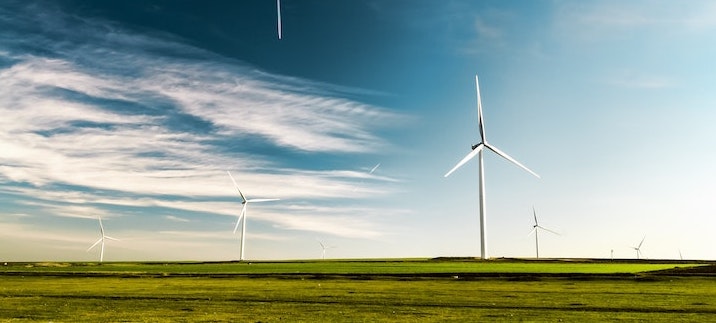
Sponsored article: Mark Burrows and Rosalind Smith-Maxwell examine infrastructure opportunities emerging from efforts to meet the UK’s net zero target.
Quinbrook believes that the accelerating UK energy transition offers a compelling and timely opportunity for new infrastructure investment, especially for UK investors. Reports suggest that £1trn of investment could be required[1] in new-build assets and decarbonisation initiatives to meet the UK’s net zero emissions target by 2050.[2]
Commitment to achieving net zero and the underlying opportunity to create green collar jobs as the UK looks to “build back better”[3] following Covid-19, was highlighted recently when the UK government and the Committee on Climate Change (CCC) made a series of milestone policy announcements.
These included the energy white paper[4], which built on the prime minister’s ten point plan for a “green industrial revolution”[5] and addressed the transformation of the UK’s energy system whilst promoting high-skilled jobs and clean, resilient economic growth.
Delivery of each of the targets within the ten point plan alone would potentially boost UK electricity demand by 13% by 2030 from 2020 levels[7], but this would still see a shortfall in achieving the carbon emission reductions set in the 4th and 5th carbon budgets[8].
The gap to targeted emission reductions widened following the CCC’s 6th carbon budget in December, when the prime minister increased the UK’s emissions reductions target for 2030 from 53% to 68% of 1990 levels[9].
Fundamentals
The investment case for new renewables generation and grid support infrastructure in the UK is not just being driven by policy it is also being driven by fundamental economics.
In the UK today both new build wind and solar PV and more significantly, new build onshore wind and hybrid storage projects, offer a lower cost of energy than new build gas turbine plants, commonly referred to as CCGT[10].
Weather conditions experienced during the recent winter highlighted the urgent need for investment in new flexible generation capacity in the UK such as peaking plants, energy storage and specific grid supportive infrastructure such as synchronous condensers (a century old technology).
This period saw significant tightening of reserve margins causing National Grid to issue an unprecedented three capacity notices[11], The most recent of which showed the reserve margin was as low as 194MW[12], less than the size of a single potential storage project.
The low reserve margin has increased both the volatility and the overall level of market prices, with average day ahead pricing of GBP 71/MWh in January 2021 double that achieved in January 2020. This need for new flexible generation is forecast to grow in the coming decade as the variable supply and demand gap increases. By 2030, some reports estimate that as much as 30GW of new flexible generation capacity will be required[13].
Synchronicity
In response to the changing energy mix as the energy transition gathers pace, National Grid has launched a series of pathfinder initiatives that will procure new infrastructure investment to mitigate the retirement of a third of the UK’s existing synchronous generation capacity represented by old coal, gas and nuclear plants.
Synchronous generation is projected to halve again by 2030[14]. This loss of synchronous capacity has given rise to a renaissance for a century-old technology, known as the synchronous condenser. These relatively simple yet robust machines are large spinning rotors, in effect, that replace the lost inertia from retiring coal, gas and nuclear plants.
They are long-life pieces of equipment and are located at certain sites around the UK where National Grid needs the replacement capacity to ensure power grid stability in the wake of these older plant retirements. National Grid offers long-term revenue contracts under competitive procurement processes to secure these critical grid support services. The contract revenues are backed by National Grid and attract index-linked, long term contracted revenues.
Quinbrook is currently building the UK’s first new synchronous condenser project in Wales and believes this long term infrastructure investment will create a diverse range of positive ESG impacts to the UK grid and hence all UK communities depending upon a secure supply of increasingly renewable power. Quinbrook believes these investments can generate attractive and contracted cash yield together with capital growth by building to core in this niche yet compelling sector of energy infrastructure.
Mark Burrows is head of investor relations and Rosalind Smith-Maxwell vice president of Quinbrook Infrastructure Partners.
Photo by Arteum.ro on Unsplash
__
FREE monthly newsletters
Subscribe to Room151 Newsletters
Room151 Linkedin Community
Join here
Monthly Online Treasury Briefing
Sign up here with a .gov.uk email address
Room151 Webinars
Visit the Room151 channel
__
1. https://www.ft.com/content/036a5596-87a7-11e9-a028-86cea8523dc2
2. https://www.gov.uk/government/news/uk-becomes-first-major-economy-to-pass-net-zero-emissions-law
3. The Ten Point Plan for a Green Industrial Revolution and the Energy white paper_ Powering our net zero future – GOV.UK
4. Energy white paper_ Powering our net zero future – GOV.UK
5. The Ten Point Plan for a Green Industrial Revolution and the Energy white paper_ Powering our net zero future – GOV.UK
6. Energy white paper_ Powering our net zero future – GOV.UK
7. BNEF The U.K.’s green wish list stimulus meets new targets
8. Summary of Aurora insights from the Ten Point Plan, Aurora Energy Research 19th November 2020
9. https://www.gov.uk/government/news/uk-sets-ambitious-new-climate-target-ahead-of-un-summit
10. BNEF Levelised cost of energy across technologies UK 2020, H1
11. gbcmn.nationalgrideso.com
12. gbcmn.nationalgrideso.com
13. Aurora Energy, The Need For Flexibility In A High Renewables World
14. Quinbrook analysis based on data from BNEF












